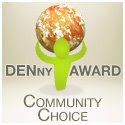http://bit.ly/no-cursive-in-
Cursive isn't a required standard for students in the new Common Core
State Standards for English, which Georgia and 40 other states
adopted last summer. Teachers and administrators from across GA will
meet in March to decide whether to amend the standards and retain
cursive writing, which is already in serious decine."A lot of my
students over the years have stopped being able to read cursive
writing," says middle grades ELA teacher Ellen Jackson. "I have to
make sure to write in print because they can't read it otherwise."
ALSO: here's a teacher chat about the pros and cons:
http://bit.ly/tln-cursive
~~Hope this Helps!
~~GB











